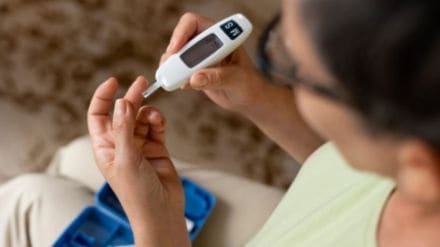Diabetes has become one of the most common diseases affecting over 77 million adults in India. According to data by the World Health Organization nearly 25 million more are in the pre-diabetic stage. Still for Indian women, the condition remains hidden, often going undiagnosed until major signs show up.
“When we think of diabetes, most people think about the most common symptoms like constant thirst, frequent urination, or unexplained fatigue,” says Dr. Amit Saraf, Director of Internal Medicine at Jupiter Hospital, Thane, Mumbai. “But in women, the signs can look very different. They’re often subtle, scattered, and easy to miss,” he adds.
Why diabetes hides in women
One major reason diabetes often goes unnoticed in women is hormonal change. Women go through natural hormonal shifts during their monthly cycle, pregnancy, and menopause. These changes affect how the body handles sugar, leading to irregular blood sugar levels that may not match the typical pattern doctors look for.
“Pregnancy-related diabetes, called gestational diabetes, is an example,” explains Dr. Saraf. “It often disappears after childbirth, so women think they’re in the clear. But it quietly raises the risk of developing Type 2 diabetes later in life.”
The symptoms that don’t look like diabetes
Unlike men, women may not show the common signs of diabetes. Instead, they experience recurring urinary tract infections (UTIs), yeast infections, irregular periods (often linked to PCOS), or even stubborn weight fluctuations. These problems are often linked to hormonal or gynaecological issues, but in many cases, diabetes is the real reason that goes unnoticed.
By the time doctors identify it, serious complications like nerve damage, kidney trouble, or heart disease may already have started developing.
Recent research shows that nearly 18 per cent of young working women in India are already at high risk of Type 2 diabetes. Meanwhile, 53 per cent fall into the moderate-risk group.
The hidden heart risk
One of the biggest concerns doctors are now highlighting is how diabetes silently affects the heart. Women with diabetes face a greater risk of heart disease compared to men. However, their heart symptoms are often not as dramatic.
“Men might experience sharp chest pain, but women often feel breathlessness, nausea, or exhaustion,” says Dr. Saraf. “These symptoms are usually dismissed as stress or overwork, leading to dangerous delays in diagnosis and treatment.”
The emotional burden
Women with diabetes also face a higher likelihood of depression and anxiety, which makes managing the condition even tough. Combined with family responsibilities and demanding work lives, women often push their own health to the bottom of their priority list.
“Awareness is the first step,” says Dr. Saraf. “If something feels off like frequent fatigue, mood changes, or recurrent infections don’t ignore it. Get your blood sugar checked.”
Experts say that doctors need to approach diabetes diagnosis with a gender-sensitive lens. Women don’t always follow the male-centered diabetes model, and early detection requires paying attention to these subtler signs.
For women, diabetes doesn’t always come with obvious warnings. Sometimes it shows through infections, fatigue, or hormonal changes. Paying attention to those signs, and acting on them early, could make all the difference.
